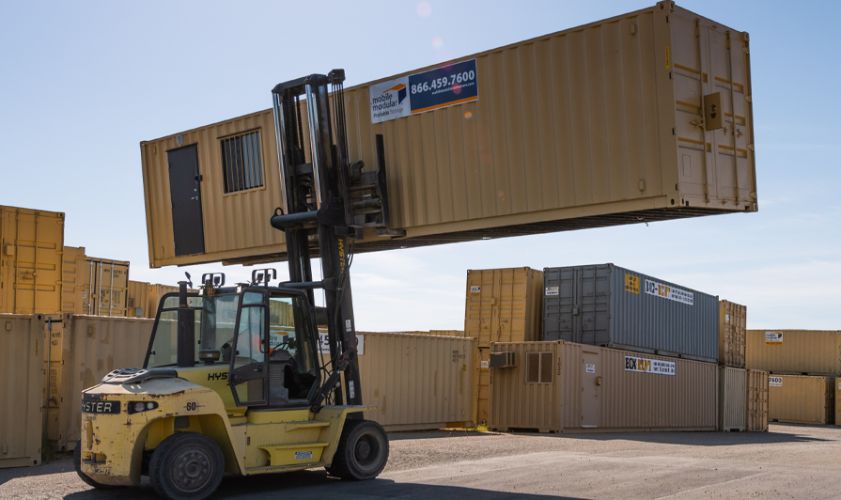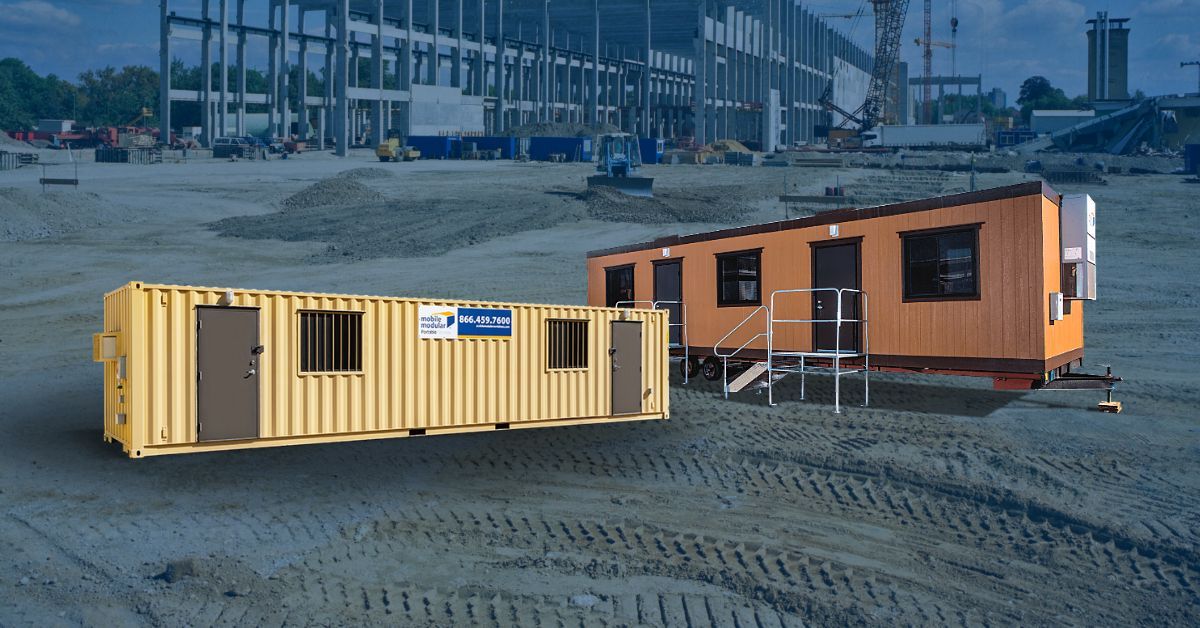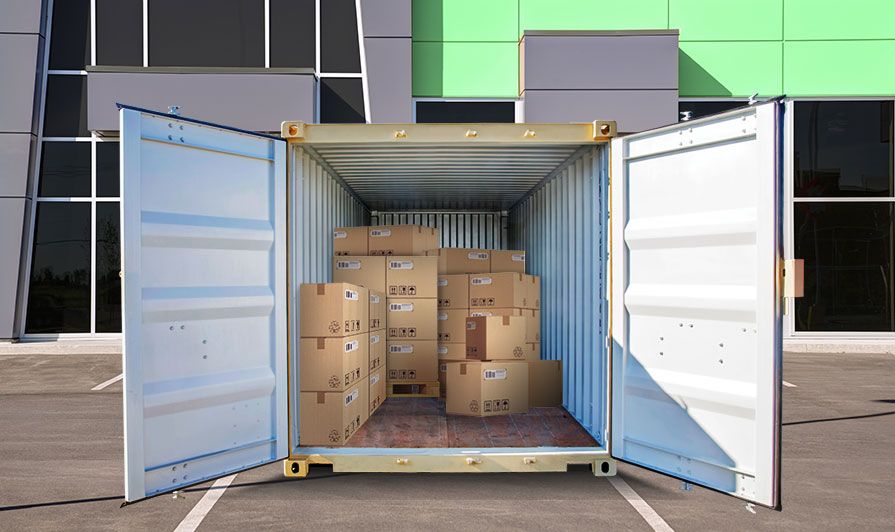- Rent, Lease, or Purchase
- |
November 20, 2020
How Much Does a Shipping Container Weigh?

Portable shipping containers, also known as Conex boxes or portable storage containers, are large, weather-resistant steel containers used in various industries for storage, accommodation, and temporary office space. Shipping containers are widely used in:
- Retail: Storage for showrooms, stores, and restaurants
- Education: Storage for sports equipment, office records, and furniture
- Construction: On-site storage of valuable tools and materials
- Industrial: Storage facilities for equipment, parts, and spares
- Government: Storage of documents and other sensitive material
- Automotive: Storage of parts, tools, and tires
- Healthcare: Storage for laundry, records, and other medical equipment
- Agriculture: Storage of farm equipment, tools, and expensive machinery
In part, the logistics, longevity, and maintenance of shipping containers revolve around a very specific attribute - their weight.
Why is Weighing a Shipping Container Important?
Weighing a container so as to optimize the payload per its dimensions can help determine if you are complying with regulatory guidelines and government transport regulations. Weight limits matter in both export compliance and inland movement of containerized cargo units.
Overloaded or unbalanced shipping containers can pose a great risk for container ships, general road safety, and the cargo itself.
For overseas shipping, The IMO (International Maritime Organization) requires shippers to provide a Verified Gross Mass (VGM) of the containers before being loaded onto a ship for export. This is to ensure safety by minimizing accidents caused by overweight containers.
Shipping organizations need to comply with the Safety Of Life At Sea (SOLAS) VGM requirements, meaning they need to accurately weigh the shipping containers and optimize the loads to avoid penalties and fines.
For road transport, check state truck size and weight limit laws, issued by the Federal Highway Administration under the US DoT. These vary from state to state and the gross vehicle weight differs for regular and special operations.
Containers are versatile because they are lightweight and easy to move. But just how much do they weigh?
There are different sizes and dimensions of shipping containers - 20 ft. shipping containers and 40 ft. shipping containers being most popular among other lengths - and naturally, each size weighs a different amount.
What Is Tare Weight?
Tare weight refers to the weight of an empty shipping container without any cargo or contents. The payload weight is generally determined by subtracting the tare weight from the gross weight. However, this method of determining weight can be inaccurate in cases where other variables, such as fuel in transportation trucks, are also involved.
Container Weights as per the Size of Shipping Containers
How Much Does a 10 ft. Shipping Container Weigh?
A 10 ft. shipping container has a tare weight of approximately 2645 lbs, and has a payload capacity of about 19,753 lbs, making the gross or laden weight about 22,398 lbs.
Other related parameters matter too. The dimensions and capacity of 10 ft. shipping containers are listed below:
-
External length: 10 ft
-
External width:8ft
-
External height: 8.5ft
-
Internal length: 9ft 2in
-
Internal width: 7ft 8.5in
-
Internal height: 7ft 10in
-
Capacity: 4,197 gallons
How Much Does a 20 ft. Shipping Container Weigh?
A 20 ft. container has a tare weight of about 4,914 lbs, a maximum payload capacity of 47,900 lbs, and a gross weight of 52,813 lbs.
An ISO standard, 20 ft. shipping container boasts the following dimensions and capacity:
-
External length: 19ft 10.5in
-
External width: 8ft
-
External height: 8.5ft
-
Internal width: 7ft 8in
-
Internal height: 7.5ft
-
Internal length: 19ft 4in
-
Capacity: 33,200 gallons
How Much Does a 40 ft. Standard Shipping Container Weigh?
A 40 ft. shipping container has a tare weight of approximately 8,159 lbs and has a maximum payload capacity of about 59,039 lbs. Its maximum laden weight is about 67,199 lbs.
The dimensions and capacity of a 40-foot Conex container are listed below:
-
External length: 40ft
-
External width: 8ft
-
External height: 8.5ft
-
Internal length: 39ft 5in
-
Internal width: 7ft 8in
-
Internal height: 7ft 10in
-
Capacity: 67, 670 gallons
How Much Does a 40 ft. High Cube Shipping Container Weigh?
A 40 ft. high cube container has a tare weight of approximately 8,747 lbs and has a maximum payload capacity of about 58,448 lbs. The maximum laden weight is about 67,196 lbs.
The main difference between a 40-foot standard container and a high cube container revolves around height. Here are the capacity and dimensions of a 40 ft. high cube shipping container:
-
External length: 40ft
-
External width: 8ft
-
External height: 9.5ft
-
Internal length: 39ft 5in
-
Internal width: 7ft 8in
-
Internal height: 8ft 10in
-
Capacity: 76,300 gallons
How to Weigh Shipping Containers
The three methods of weighing shipping containers on a chassis are:
- Trailer Suspension Weighing System- In this method, a weighing system is fitted to the truck's suspension system and calibrated to give an indication of the load on the truck. Though, this isn't a highly efficient method since the accuracy of the trailer suspension weighing system is around 3% - 5%. This is not considered credible.
- Weighbridge- A weighbridge is a large platform scale that is mounted onto a concrete foundation and can weigh large vehicles and their payload. The accuracy of the weighbridge system is about 0.2% to 0.5%, but it may be expensive and take up a lot of space on the chassis.
- Axle Weigh Pads- Axle weigh pads are portable weighing scales that can measure the weight of both stationary vehicles and vehicles in motion. They transmit this data to a central indicator. These devices are lightweight and economical.
Summary
Shipping containers with different dimensions have different weights, each suitable for different cargo shipping and storage applications. As the dimension of a shipping container increases, the unit becomes heavier. Methods to determine the weight of containers on a chassis like axle weigh pads, weighbridge, and trailer suspension must be selected based on regulatory requirements, budget, and other factors.
It is important to optimize the weight of the load in the containers to avoid overloading and ensure maximum safety.
Container transport, unloading, and installation are critical operations even when your business needs them for commercial storage or office space applications.
We discuss all the specs of the job with all customers interested in container rentals in order to arrive at the perfect pricing. We also have our own fleet of trucks and trailers, which means you can expect containers on schedule without subcontracting hassles.
If you are interested in Mobile Modular Portable Storage's shipping containers for sale or rent, get a quote here or contact us at 866-459-7600.
Related Blogs



Subscribe to Our Blog
Enter your email address to subscribe to the blog and receive the notification of new posts by email.
Thank You for Subscribing to Our Blog!
Stay tuned for upcoming emails with valuable content that we hope will enhance your experience with our brand.
Both Pardot and mg360 form submissions failed.
